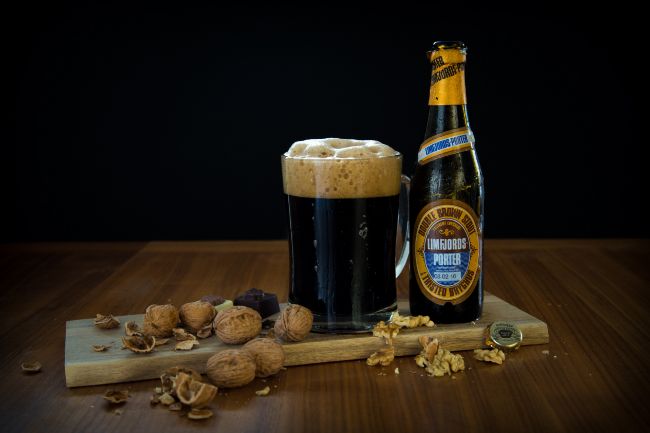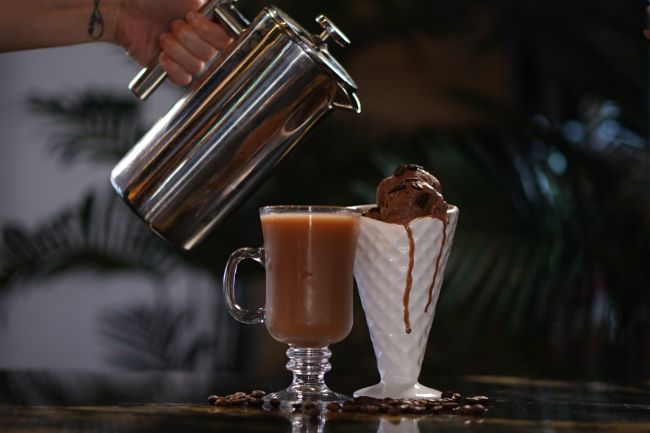You’re probably looking for that darker chocolate taste in beer. You’re also here because you’re interested in making some on your own.
No worries, this article has two popular chocolate stout recipes for you!

One Gallon of Chocolate Stout
Recipe Profile:
- Single-stage BIAB (Brew-in-a-Bag) 1 gallon
- Bitterness (IBUs): 39 Target OG (Original Gravity): 1.054 Target FG (Final Gravity): 1.015
- 5.1% is the estimated ABV
- Boil: 90 minutes
Ingredients:
- 1.75 pounds of Maris Otter, 3 ounces of chocolate malt, and 2 ounces of torrified wheat.
- 1.5 oz Caramunich Malt 1.5 oz Barley that has been roasted
- 0.2 oz The Northern Brewer Hops at 90 minutes
- 15 minutes after adding 10g cocoa powder,
- Yeast for American Ale (Wyeast 1056)
Steps
- Bring the temperature of 10.7 liters of water to 162°F. Add your grains and stir everything together until it looks a little like oatmeal.
Turn off the heat, put a lid on it, and let it sit at 156°F for an hour.
- Then you have to “mash out.” You turn back on the heat, bring the temperature up to 168°F (75.6°C), and stir for 7 minutes.
- Take out the grains and get ready to boil the water. If you’re using a bag, take it out and hang it above the pot until it’s almost dry.
If you’re using a colander, strain to get rid of the grains and save the wort, which you’ll put back in the pot.
- Make sure your gravity is correct, and fix it if it isn’t. For this recipe, you need 70 gravity points, and we want to end up with 1.3 gallons after the boil.
Boiling
- Bring your wort to a boil to start the boil. Once the water is boiling, set the timer.
Bittering hops should be added, as shown above.
- In the meantime, get your sanitizer solution ready.
- Prior to the water in the kitchen sink boiling, prepare an ice bath. Fill it as full as you can with ice and cold water.
Once the boil is over, move your pot to the sink to cool the wort to pitching temperature. You should find this on the yeast package.
Every time you check the temperature, make sure to clean the thermometer.
- In the meantime, clean your carboy, screw cap, airlock, funnel, and strainer/colander very well. You want to have everything prepared before the wort reaches the proper temperature.
- Once the wort reaches pitching temperature, strain it into the carboy. Don’t put more than one gallon into the carboy.
- Give the wort air. Secure the lid and give the carboy a few gentle shakes to include air.
- Get rid of the yeast! Cut the package with clean scissors and pour only half of the yeast.
- Fill the airlock of the carboy with sanitizer to seal it. It should go in the screw cap.
- Put the carboy in a dark place away from the daily noise of the house for at least 14 days. Try not to go more than 21 days, though.
Putting the Bottles Together
- If the carboy wasn’t already on the counter, move it there. If you moved the wort a lot, let it sit so the yeast can settle.
- Clean everything that will touch the beer, including the bottling bucket, the auto-siphon, the tubing, the filler, the bottles, and the bottle caps.
- Mix 0.59 oz (17 g) of corn sugar with as much boiling water as it takes to dissolve it. Add the sugar solution that has been dissolved to your clean bottling bucket.
Before You Put Your Auto-Siphon and Hose in the Carboy
- Fill them with sanitizer.
- Move the solution to a different container until the beer replaces all the sanitizers in the tubes.
- Carefully pour beer from the carboy into the bottling bucket, which should also be on the floor.
- Transfer all of the liquid up until it hits the sediment. Do not pour out the residue.
- Now, move the bucket of bottles to the counter and use a siphon to pour beer quietly into each bottle. When the liquid reaches the very top of the bottle, take out the bottle filler.
This will leave the perfect amount of headspace at the top of the bottle.
- Cover each bottle with a clean cap and screw it on, or put your clean swing-top caps in place if you’re using those.
- Stand the bottles up in a quiet, dark place around 65F (18.5C).
- Wait 30 days, if you can. Try to hold out for 14 days if you’re too curious.
If you can’t wait, you can try the beer after seven days, but you must condition it for at least 14 days.
Belgian Chocolate Stout

Ingredients
- One bottle of Thomas Cooper’s Devil’s Half Ruby Porter, 1.7 kg
- 1 x 1.5 kg of Thomas Cooper’s Amber Malt Extract
- 2 500g packages of Coopers Light Dry Malt
- One box of Chocolate Malt (250g)
- 1 x 100g Cacao Nibs
- 1 x Vanilla Bean (can be substituted for extract or essence)
- 1 11.5g package of Safale S-33 dry yeast
- One pack of 250g Coopers Carbonation Drops
Mix
The day before
- Line a pot (at least 4 liters) with a mesh cleaning cloth (right out of the package), then add the broken Chocolate Malt and 2 liters of cold water.
- Cover it and let it sit in the fridge for 24 hours.
Day of Brew
- Take the Chocolate Malt out of the fridge. Gather the corners of the mesh cloth and lift it.
This will let the liquid drain back into the pot from the Chocolate Malt.
- Put the liquid that has been strained on the stove. Bring it to a boil, add the Cacao Nibs and Vanilla Beans (a substitute extract or essence), and turn off the heat.
- Put the pot in a bath of cold water for about 15 minutes to cool the liquid, then strain it into a fermenting vessel (FV).
- Stir Thomas Coopers Devil’s Half Ruby Porter, Amber Malt Extract, and Light Dry Malt into cooled FV liquid. Don’t worry if lumps of malt extract remain; they will dissolve after a few hours.
- Fill up to the 20-liter mark with cold tap water and stir well.
- Check the temperature and add warm or cool (refrigerated, if necessary) water to the 23-liter mark to start the brew at 18C to 20C.
- Sprinkle the Safale S-33 dry yeast, and the brew can yeast, close the lid, and try ferment at 20C.
Brew
- Keep beer as close as possible to 20°C.
- The fermentation process is over when the specific gravity stays the same for two days.
- It should end between 1014 and 1019.
Bottle
- Fill clean PET bottles slowly until they are about 3 cm from the top.
- Add two drops of carbonation to each bottle and put the caps on. Use only one carbonation drop for bottles intended to be stored for longer.
- Keep the bottles standing up in a place that is above 18°C and not in direct sunlight.
Serve
- After at least two weeks, squeeze the PET bottles to see if there is enough carbonation.
- When it’s time to drink, put the bottles in the fridge upright.
- Serve at the temperature of the refrigerator or a little bit warmer.
- You can pour the chilled beer into clean glasses and leave the sediment behind.
- You can expect the alcohol by volume (ABV) to be around 6.4%.
How about a maple wine recipe? Check it out here.
Final Thoughts
Chocolate stouts are delicious brews that you can make on your own. Once more experienced, you can alter the recipe to suit your tastes.
Just make sure to brew it well and use safe ingredients.